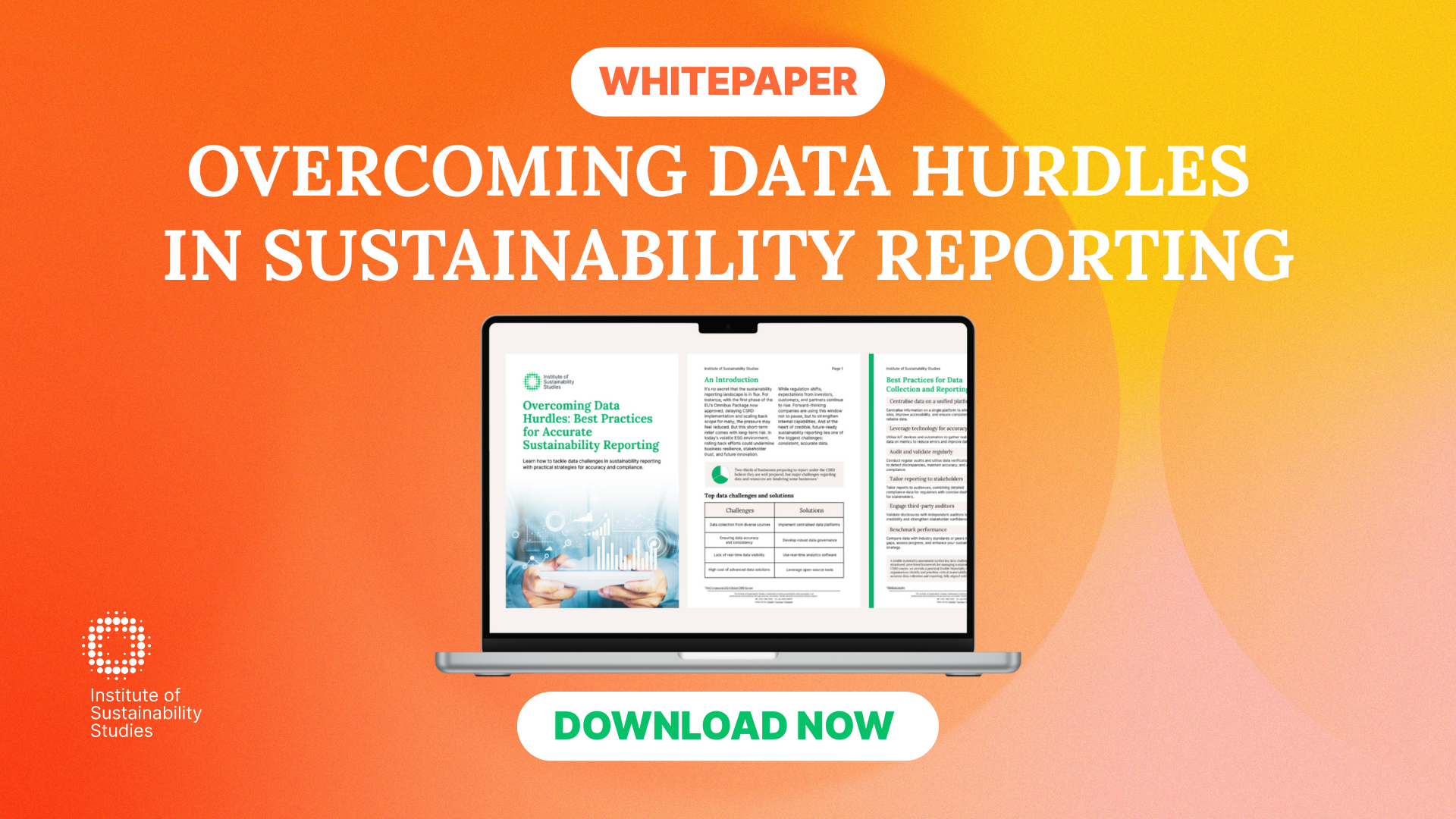The Convention on Biological Diversity (CBD) is a landmark international treaty that has redefined how nations, businesses, and communities approach biodiversity conservation. As environmental challenges like habitat loss, pollution, and climate change intensify, the CBD provides a global framework to protect ecosystems, species, and genetic resources.
Its objectives align with environmental preservation and play a pivotal role in business sustainability, encouraging organisations to integrate biodiversity into their strategies. Continue reading to dive deeper into the CBD and explore why preserving nature is pivotal for sustainable economic growth and societal well-being.
What is the Convention on Biological Diversity?
The Convention on Biological Diversity (CBD) is an international treaty adopted at the Earth Summit in Rio de Janeiro in 1992. It aims to conserve biodiversity, promote sustainable use of natural resources, and ensure the fair and equitable sharing of benefits derived from genetic resources. Recognised as a cornerstone of global environmental governance, the CBD addresses the critical need to protect ecosystems, species, and genetic diversity in response to rising threats such as habitat loss, climate change, and pollution.
The UN Convention on Biological Diversity has three main objectives:
- Conservation of biological diversity – Protecting ecosystems, species, and genetic resources.
- Sustainable use of biodiversity – Ensuring natural resources are used in ways that do not deplete or harm them for future generations.
- Fair and equitable sharing of benefits – Ensuring that benefits arising from the use of genetic resources, particularly in developing countries, are shared fairly.
The treaty provides a framework for nations to create National Biodiversity Strategies and Action Plans (NBSAPs), enabling governments to integrate biodiversity goals into their policies and development plans. It also supports the establishment of international agreements like the Nagoya Protocol (on access and benefit-sharing) and the Cartagena Protocol (on biosafety).
The CBD plays a pivotal role in shaping global efforts to reverse biodiversity loss, as evidenced by initiatives like the Kunming-Montreal Global Biodiversity Framework, which aims to halt biodiversity decline by protecting 30 percent of the planet’s land and oceans by 2030 (the “30×30” target). This treaty underscores the urgency of international cooperation to safeguard biodiversity as a vital component of sustainable development.
Key protocols and agreements under the CBD
The Convention on Biological Diversity (CBD) has led to several significant protocols and agreements that address specific aspects of biodiversity conservation, sustainable use, and equitable benefit-sharing. Below are the key protocols and agreements under the CBD:
Cartagena Protocol on Biosafety (2003)
The Cartagena Protocol focuses on ensuring the safe handling, transport, and use of living-modified organisms (LMOs) resulting from modern biotechnology.
Objective: To protect biodiversity from potential risks posed by LMOs, while also considering human health.
Key elements:
- Establishes an Advance Informed Agreement (AIA) procedure to regulate transboundary movement of LMOs.
- Promotes the Precautionary Principle, ensuring measures are taken even in the absence of scientific certainty.
- Requires risk assessments and transparent information-sharing through the Biosafety Clearing-House (BCH).
Nagoya Protocol on Access and Benefit-Sharing (2014)
The Nagoya Protocol deals with access to genetic resources and the fair and equitable sharing of benefits arising from their utilisation.
Objective: To create a legal framework ensuring that benefits (e.g., monetary or technological) derived from genetic resources are shared fairly with the countries and communities providing those resources.
Key elements:
- Requires Prior Informed Consent (PIC) from the provider country before accessing genetic resources.
- Establishes Mutually Agreed Terms (MAT) for benefit-sharing between users and providers.
- Recognises and protects traditional knowledge held by Indigenous Peoples and local communities.
Kunming-Montreal Global Biodiversity Framework (2022)
Adopted during COP15, the Kunming-Montreal Framework sets ambitious global targets to halt and reverse biodiversity loss by 2030.
Objective: To create a global action plan to protect biodiversity and ensure ecosystems are resilient and healthy by 2030.
Key elements:
- 30×30 Target: Protect at least 30 percent of the world’s land and oceans by 2030.
- Reduce pollution, including nutrient and plastic waste, to non-harmful levels.
- Eliminate harmful subsidies worth $500 billion annually and increase financial flows to support biodiversity efforts.
- Ensure Indigenous Peoples and local communities play a central role in biodiversity conservation.
Aichi Biodiversity Targets (2010-2020)
Adopted as part of the CBD’s Strategic Plan for Biodiversity 2011-2020, the Aichi Targets included 20 global goals to address biodiversity loss.
Objective: To halt biodiversity decline through conservation, sustainable use, and awareness.
Examples of targets:
- Target 11: Protect at least 17 percent of terrestrial areas and 10 percent of marine areas.
- Target 12: Prevent the extinction of threatened species.
- Target 19: Increase biodiversity knowledge, science, and technology.
Outcome: While progress was made, most Aichi Targets were not fully achieved, leading to the adoption of the Kunming-Montreal Framework.
Biodiversity-related Agreements
While not directly under the CBD, the following agreements complement its goals:
- Ramsar Convention (1971): Focuses on the conservation and sustainable use of wetlands.
- CITES (Convention on International Trade in Endangered Species) (1975): Regulates the international trade of endangered flora and fauna.
- CMS (Convention on Migratory Species) (1979): Promotes the conservation of migratory species and their habitats.
Achievements of the CBD so far
The Convention on Biological Diversity (CBD) has made significant progress since its adoption in 1992. While challenges remain, the CBD has achieved notable successes in biodiversity conservation, sustainable use, and benefit-sharing. Here are some of its key achievements:
1. Global awareness and action for biodiversity
- The CBD has successfully brought biodiversity to the forefront of global environmental agendas. It has spurred international, national, and regional action to tackle biodiversity loss.
- Initiatives like the International Day for Biological Diversity (May 22) have helped raise public awareness and encourage global collaboration.
2. Establishment of protected areas
- Under the Aichi Biodiversity Targets (2010-2020), the CBD catalysed the creation and expansion of protected areas worldwide.
- By 2020:
- 15 percent of terrestrial areas and 7 percent of marine areas were protected, an increase from previous decades.
- This progress laid the groundwork for the 30×30 target (protecting 30 percent of land and ocean by 2030) under the Kunming-Montreal Global Biodiversity Framework.
3. Adoption of key protocols
- The CBD facilitated the adoption of critical international agreements to address specific biodiversity challenges:
- Cartagena Protocol (2003): Ensures biosafety in the use of living modified organisms (LMOs).
- Nagoya Protocol (2014): Promotes equitable benefit-sharing of genetic resources.
- These protocols support biodiversity protection, sustainable use, and fairness in accessing natural resources.
4. Recognition of Indigenous Peoples and Local Communities (IPLCs)
- The CBD emphasises the role of Indigenous Peoples and local communities in biodiversity conservation.
- The Nagoya Protocol recognises traditional knowledge associated with genetic resources, helping to safeguard IPLC rights.
- Initiatives led by IPLCs are increasingly supported to protect ecosystems and ensure equitable resource management.
5. Integration of biodiversity into national policies
- Over 190 countries have developed National Biodiversity Strategies and Action Plans (NBSAPs), a requirement under the CBD. These plans guide nations in integrating biodiversity conservation into their policies, economies, and legal frameworks.
- Countries are aligning biodiversity goals with their climate and sustainable development objectives, such as the UN SDGs.
6. Mainstreaming biodiversity across sectors
- The CBD has encouraged governments and businesses to integrate biodiversity considerations into agriculture, forestry, fisheries, and infrastructure development.
- Concepts such as nature-based solutions and ecosystem-based approaches are increasingly being applied to tackle climate change, water management, and urban development.
7. Global biodiversity frameworks and targets
The CBD has led the way in setting biodiversity goals, such as the:
- Aichi Biodiversity Targets (2010-2020): While not fully achieved, these targets galvanised efforts globally to conserve and restore ecosystems.
- Kunming-Montreal Global Biodiversity Framework (2022): Sets ambitious goals like protecting 30 percent of the planet’s land and oceans by 2030.
8. Biodiversity science and monitoring
- The CBD promotes scientific collaboration and data sharing to monitor biodiversity trends.
- Tools such as the Biodiversity Indicators Partnership (BIP) and the Global Biodiversity Outlook reports have improved our understanding of global biodiversity health and informed policymaking.
9. Private sector engagement
- Businesses are increasingly recognising their role in biodiversity conservation through sustainable practices and reporting frameworks.
- The CBD has fostered private sector participation through mechanisms such as the Nagoya Protocol and guidelines for corporate biodiversity action.
Final thoughts
The CBD’s achievements underscore its significance in shaping global efforts to protect biodiversity and address emerging environmental crises. From establishing protected areas to empowering Indigenous communities and mainstreaming biodiversity across sectors, the CBD has provided a strong foundation for action. However, achieving its ambitious goals, such as the 30×30 target, requires continued collaboration from governments, businesses, and individuals alike.
For businesses, integrating biodiversity into operations is a key pillar of sustainability and resilience. By embracing these principles, organisations can drive meaningful change while ensuring long-term success. Equip your team with the expertise needed to advance sustainability goals by enrolling in our sustainability training courses. Learn how to align your strategies with global frameworks like the CBD and take a leading role in building a more sustainable, biodiverse future.
Ryan is an experienced sales professional with a Bachelor’s Degree in Accounting from Rathmines College and a qualification in Social Studies and Psychology. Before joining ISS, he worked with major companies like Permanent TSB and PrepayPower.
Passionate about promoting sustainability through education, Ryan is dedicated to guiding individuals on their learning journeys. As a key member of our team, he provides valuable support to current and prospective participants in achieving their educational goals.
- Ryan Westonhttps://instituteofsustainabilitystudies.com/insights/author/ryan/
- Ryan Westonhttps://instituteofsustainabilitystudies.com/insights/author/ryan/
- Ryan Westonhttps://instituteofsustainabilitystudies.com/insights/author/ryan/
- Ryan Westonhttps://instituteofsustainabilitystudies.com/insights/author/ryan/









